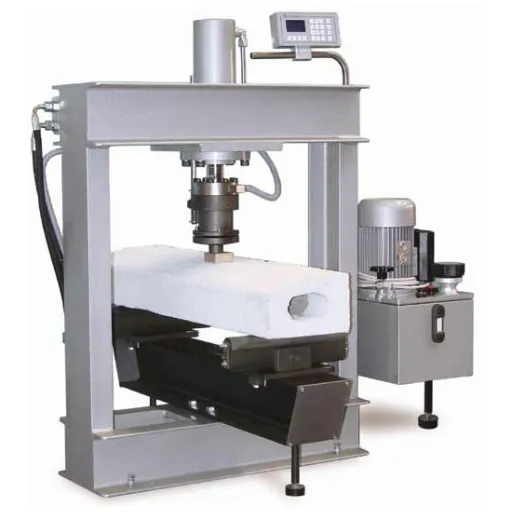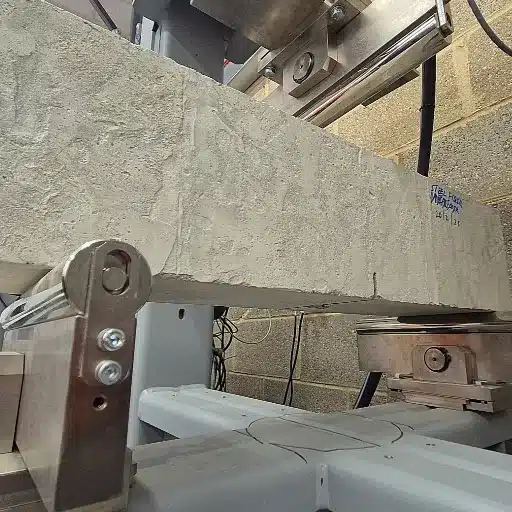Concrete, as a major building material of the modern era, finds its wide application because of its incredible strength, durability, and versatility. In the vast domains of properties of concrete, flexural strength and modulus bear extraordinary importance in determining the concrete’s ability to perform under a bending-type load assigned on it and resistance to cracking. This blog talks of the importance of these properties. These properties are inherent to structural integrity and design; and thus such properties have to be pondered upon. A professional such as a civil engineer, architect, or a construction enthusiast-whoever would want to think of these properties-would certainly feel enriched through an in-depth knowledge of concrete’s flexural strength and modulus, which essentially define the behavior of a material under stress.
Understanding Flexural Strength

Importance of Flexural Strength in Concrete
What is indeed called a flexural strength of concrete is the build-up of pressure against bending or flexural action; irritation is observed in tensile forces as an external force induces it. When the concrete needs to be bent or stressed during its application, such structures are beams, slabs, pavements, and bridges.
Its main reason is ensuring the safety and durability of structures. A concrete can withstand cracking and failure while bearing heavy loads and uneven ground conditions, with a high strength of flexural action. They are usually used for applications such as highway pavements, constantly exposed to traffic and stresses coming from the environment. Flexural strength improvements would allow engineers to enhance the duration and utilization of concrete structures.
Further, it is worthwhile to comprehend and engineer flexural strength for cost-benefit in construction. The right kind of flexural strength determines the actual performance of the material in service, such that it can be provided in a lesser quantity to confer the same measure of stability, thus reducing construction cost. Proper design of the concrete with adequate flexural strength might then eliminate maintenance and repairs, thereby saving much time and money in the future.
Significance of Flexural Strength in Material Engineering
Flexural strength is one critical factor in material engineering because it is one way it is measured for the material’s ability to resist deformation under loads. It is a property that ensures structures subject to bending forces do not acquire cracks or failures. Knowing and designing for suitable flexural strength would also assure engineers that constructions will grow older and be much safer.
The importance of flexural strength stems directly from the fact that it determines the service life of the material when subjected to bending stresses. Structural members such as beams, pavements, and floors are most times under bending forces; hence, the material should have adequate flexural strength. This, if neglected, could lead to premature failures, heavy costs in maintenance, or otherwise dangerous situations. Material engineering research and development studies focus on how to optimize flexural strength while keeping costs down and thus ensuring a high-utility construction.
It also assists in resource efficient allocation since it allows the use of less material while ensuring stability of the final structure. Thereby, saving economic resources and encouraging sustainable construction practices. Flexural strength is thus crucial to life safety, cost reduction, economic sustainability, and environmental sustainability of the engineering activity. So, far from being ignored in the design and material selection process, this property should be given primary attention by engineers when seeking to create stable and reliable structures.
Applications of Flexural Strength in Various Industries
Flexural strength plays an important role in several industries because it allows materials to be qualified for serviceability and reliability under stress. One of the well-known consents is that flexural strength testing enforces conformity on materials like concrete, wood, or composite materials in construction to secure structural stability of buildings, bridges, and other infrastructures. Such materials with high flexural strength do not fracture and that retain their integrity with various loads or environmental conditions, thereby safeguarding the lifespan of construction projects.
The industries of automotive and aerospace are, in fact, reliant on flexural strength. Components like body panels, chassis structures, wings, etc., have to bear bending forces during operation to maintain their performance and safety. The materials with greater flexural strength are selected to bear the pressures of speed, impact, and fluctuating pressure; hence vehicles can make it through harsh environments while still being efficient, safe, and durable.
In the manufacturing of consumer goods also, flexural strength plays a role in providing better product resilience and functionality. In the first place, circuit boards, ski equipment, and furniture are all products that need to resist bending as well as regular use, in order to not break or permanently deform. So, by giving precedence to flexural strength, industries elevate user satisfaction and cut down replacement costs in the long run.
Calculating Flexural Strength

Step-by-Step Process for Flexural Strength Calculation
- Prepare the Specimen: Ensure the test specimen is correctly shaped and sized according to the respective testing standard, such as ASTM, ISO standards, among others. The normal specimen is a rectangular beam having uniform dimensions.
- Set Up the Testing Equipment: The specimen is placed on two supporting points in a universal testing machine. The distance between support places, normally called the span length, must be measured accurately and fixed as per test requirements.
- Apply the Load: The force is loaded with a constant rate through a loading nose at the center under testing by the force acting perpendicularly to the surface of the specimen.
- Record Measurements: The force was just before creating the maximum load, defining the flexural strength of the specimen. Monitor and record that ultimate force.
- Calculate Flexural Strength: The flexural strength is calculated using the flexural strength formula for the three-point bending test.
Flexural Strength Formula
σ = 3FL / 2bd²
Where:
- σ = Flexural strength (in Pascals or psi)
- F = Maximum applied force (in Newtons or pounds)
- L = Length of the span between the supports (in meters or inches)
- b = Width of the specimen (in meters or inches)
- d = Thickness of the specimen (in meters or inches)
The result indicates their potential to resist bending forces. If these steps are followed very closely by industry professionals, they will always be able to ensure reliable measurements of flexural strength for quality control purposes as well as for structural validation of products or materials.
Common Formulas for Flexural Strength Calculation
Three-Point Bending Test Equation
σf = 3FL / 2bd²
Where:
- F = Maximum applied force before failure (in Newtons or pounds-force)
- L = Length of the span between the supports (in meters or inches)
- b = Width of the specimen (in meters or inches)
- d = Thickness of the specimen (in meters or inches)
Four-Point Bending Test Equation
σf = 3F(L – a) / bd²
Here:
- F = Maximum applied force before failure (in Newtons or pounds-force)
- L = Length of the outer supports (in meters or inches)
- a = Distance between the inner loading points (in meters or inches)
- b = Width of the specimen (in meters or inches)
- d = Thickness of the specimen (in meters or inches)
Simplified Flexural Strength Formula
When dealing with standardized test setups and known material properties, simplified equations for specific setups can also be used. For these, ensure the key variables, such as sample dimensions and force application, remain consistent with testing standards to derive accurate measurements.
Using these formulas consistently, alongside proper test setup and calibration, ensures accurate measurement of flexural strength. These measurements are critical to determining the structural performance of materials under bending loads in engineering and construction applications. Always refer to international standards such as ASTM and ISO for specific testing guidelines and parameters.
Determining Flexural Strength for Different Cross-Sections
Depending on the cross-section-an example being rectangular, circular, or irregular-shaped beams-flexural strength needs to be computed by various approaches. Since the shape and dimensions of the cross-section affects how stresses in the material would be distributed when the load is applied, such stress distribution needs to be considered for accurate calculations.
| Cross-Section Type | Formula | Description |
|---|---|---|
| Rectangular | σ = (3FL) / (2bd²) | Where F is the applied load, L is the span length, b is the width, and d is the depth of the cross-section. Assumes uniform stress distribution across the width. |
| Circular | σ = (32FL) / (πd³) | Accounts for circular geometry and ensures proper stress concentration under bending load. |
| Irregular | Advanced Analysis Required | Requires finite element analysis (FEA) or specialized software tools for reliable estimates. |
Irregular cross-sections require more advanced calculations and simulations, like finite element analysis (FEA). When, due to irregularity, manual calculation becomes complicated, these methods or specialized software tools become necessary to establish reliable estimates of flexural strength. Consult relevant standards or experts on how to proceed when facing special geometries.
Factors Influencing Flexural Strength

Material Composition and Its Impact on Flexural Strength
The constructional material of a structure truly determines its flexural strength. In general, stiffness, ductility, and resistance to bending forces are characteristic properties of a material and vary with each material. The properties of these materials dictate their level of flexural strength: for example, steel and carbon fiber are generally more flexually strong as against wood or concrete. The percentage and quality of ingredients, such as fibers in composites or aggregates in concrete, directly influence the resistance of the material to bending stresses.
Additives and reinforcements can even improve the flexural strength of a material. For instance, rebars or mesh in concrete increase tensile and flexural capacities. Likewise, polymers or resins added to certain materials may help in improving their flexural strength, flexibility, and resistance against cracking when subjected to stress. By altering the raw material, manufacturers can tailor the characteristics of the material for specific applications that demand a high flexural performance.
In contrast, any flaws or inconsistencies in composition may obstruct its flexural capacity. A few voids or impurities, being improper mixtures, are what constitute a weak zone where failure can more easily onset. Strict quality controls must be implemented during manufacture and mixing to ensure consistent composition-performance linkages. The ever-important microstructure of the material and bonding also go a long way in alleviating the effect of forces exerted on the material, thereby bringing material science to the fore in the context of structural design.
Environmental Conditions Affecting Flexural Strength
Key Environmental Factors:
- Temperature Variations: Extreme temperatures cause material expansion/contraction, developing internal stresses
- Humidity and Moisture: High moisture levels cause corrosion and deterioration in metallic/composite materials
- UV Radiation: Sunlight weakens surface properties, especially in polymers and plastics
- Chemical Exposure: Acidic or alkaline substances react with materials causing weakening
Environmental conditions have pronounced effects on the flexural strength of materials. Starting from temperature variation, humidity, and harmful chemical agents; all undergo gradual degradation in the absorption and deterioration of material performance. Extreme temperatures would result in substances being forced to either expand or contract, thus developing internal stresses that overthrow the structural integrity of the materials. High moisture levels or rain exposure, given enough time, may cause corrosion or other forms of deterioration, especially in metallic or composite substances.
Likewise, the actual UV radiation coming from sunlight weakens the surface properties of some materials, mostly polymers and plastics. This weakness, over time, would result in cracking, discoloration, or brittleness contributing to reduced flexural strength. For materials exposed outdoors, surface coatings or some form of additives are commonly used to reduce or block out the ill effects of UV exposure.
Chemical exposure also poses a risk to the flexural strength, particularly in industrial or polluted environments. Acidic or alkaline substances may react with materials and cause weakening. Candidate materials for a given environment should be selected, and regular maintenance should be carried out on those materials to maintain the flexural strength in adverse conditions.
Structural Design Considerations for Flexural Strength
When a structure is designed for flexural strength, the choice of material is one of the most critical factors. The engineer chooses a material with inherently high flexural strength and one suitable for the environment in which the structure will be utilized. The commonly used materials are reinforced concrete, steel, and engineered wood. Testing the material against the expected load and environmental conditions during the design phase ensures that the structure performs well over time.
The second factor is the arrangement of layout and the geometry. Load transfer through an optimum shape-via beams, arches, or trusses, etc.,-greatly increases the bending capacity of the structure. The support system may include reinforcements and joints placed in favorable locations to spread out the load and thus prevent localized failures. The designs also take into consideration the load pattern and safety margins to either take care of or account for unexpected load variations.
A third maintenance rule entails periodic monitoring with its upkeep in preservation of flexural strength over a certain period of time. Duration structures are kept on the upper hand depending on their design, whereas in some cases until deterioration goes on, wear and tear in factors influencing the environment or some force majeure factor may come into existence. Therefore, inspection should aim to identify cracks, distortions, or weaknesses of the materials in use. The repairs and reinforcements must be done quickly to maximize the life of the structure and ensure safety. Such a maintenance regime works well from the complementing side of the design, allowing the structure to do well even under variations.
Measuring and Testing Flexural Strength

Three-Point Test for Flexural Strength
The three-point test for flexural strength is the highly favored method used in assessing the bending capability of materials. In this testing procedure, the sample has to be held between two supports, while a force is applied to the midpoint. This method determines a material’s ability to resist deformation when subjected to stress, thus providing vital information for design applications.
The test specimen is generally prepared to specifications with fixed dimensional tolerances to ensure uniformity of the test results. The supports and the loading nose are placed in alignment such that force is applied smoothly with an increasing load at the specimen midpoint. The force and the deflection are recorded measurement-wise and finally evaluated for stress versus strain to the fracturing or yielding of the specimen.
Características como the flexural strength and stiffness of a given material are assessed by the three-point test. These details aid in the material selection for the processes of construction, manufacturing, and designing of a given product with safety and reliability considerations.
Determining the Flexural Modulus
The flexural modulus signifies the stiffness of the material under bending. This can usually be found by means of a three-point bend test, in which a specimen is supported at two points, and the force is applied at the midpoint. The deflection of the specimen is measured with increasing force, and the flexural modulus is calculated from stress and strain data.
To calculate the flexural modulus, one evaluates the slope of the initial straight line portion of the stress-strain curve obtained from the three-point bending test. This slope characterizes the relationship between stress applied and strain developed in the sample during the elastic region of deformation.
The knowledge from flexural modulus testing helps designers and engineers figure out how materials will behave in load-bearing situations. Materials with higher flexural modulus are more rigid and, as such, are chosen for projects where undistorted structural integrity is essential; a lower flexural modulus may be preferred to allow flexibility and to absorb impact. From this perspective, it levels with the important safety concern, having the building function properly, and lasting through engineering and industrial activities.
Interpreting Test Results and Their Applications
Interpreting test results refers to assessing the data supplied by Manufacturer Test anf determining whether the materials met specific performance standards or project requirements. For example, a flexural test measures how a material will behave when subjected to stress in a given direction. Engineering considerations will therefore establish whether the material is to be used for a particular structural application. High values for flexural strength and modulus imply that the material offers resistance or maintains rigidity, whereas low values indicate the material may be flexible in certain situations, such as absorbing shocks in a dynamic environment.
This is where test results come into play in the design and construction of the structure or product with which the materials will be associated. Materials would be chosen based on test performance so that they can perform their function well and safely. For example, the materials with a high value for flexural modulus could be applied to a pillar or beam, while lower values are more suitable for a vibration-dampening element or one that needs to be flexible in use.
Each correct material should be correctly paired to the desired application, hence without good interpretation of tests reducing the risk of structural failure and eventually prolonging the life of the project. Designers and engineers using standardized tests, and more importantly use theory applied from such tests towards reference in every field, can ensure that their object is reliable, functioning, and resisting.
Real-World Applications and Examples

Case Studies in Construction
Since the phrase “flexural strength” refers to the strength of a material when bent under a load, it is one of the properties or types of strength imparted on a material throughout construction. This also is commonly tested in concrete and other structural materials.
Bridge Design Case Study
An application of actual-world cases of flexural strength calculations would be in the design and analysis of concrete beams for bridges. Flexural strength is measured because of the concrete’s resistance to load under the traffic stresses to which it is exposed. By standardized testing and accurate calculations, one can minimize the hazards of failure with the building being granted for its longevity and safety.
Multi-Story Building Case Study
Another example could be for flexural strength data that are used in materials selection for floor slabs and beams, especially among experts building buildings with large multi-stories. Testing must be maximally accurate so that engineers can prevent cracking and deformation under heavy loads to ensure stability of the structure. Such calculations are fundamental to linking material performance to application requirements with an emphasis on maximum reliability and durability.
Aerospace and Automotive Applications
It is crucial that flexural strength testing be conducted in the aerospace and automotive industries due to the high demands imposed on material performance by severe conditions. Both sectors have the inherent need for materials that are lightweight yet able to endure intense stress and strain in the interest of safety, efficiency, and durability of the components. A material’s resistance to bending or failure under load is one of the primary factors considered in designing parts such as aircraft wings, fuselage panels, automotive chassis, and structural reinforcements.
Aerospace Industry
Achieving the right mixture of weight, and strength is crucial in the aerospace industry in ensuring the fuel efficiency and performance of the machination. Advanced composites and high-strength alloys get subjected to flexural testing to check the flexural-performance characteristics of materials facing problems of high-altitude pressure differences, turbulence-induced stresses, thermal variation, and so on in their practical applications.
Automotive Industry
In automotive applications, flexural strength test results direct fundamental design alterations and feed into crashworthiness considerations. Engineers use this data so that materials may be designed to absorb energy better in collision situations without being bad for vehicle weight. On the rise in the age of electric vehicles are now materials that are lightweight and strong for battery efficiency and range optimization.
The flexural test ensures that the actual materials could act the load of operations without a premature failure that may lead to disastrous consequences. Flexural strength testing ensures that these materials meet performance standards while also addressing the sustainability needs of the growing industry.
Manufacturing and Its Reliance on Flexural Strength Calculations
Being very critical in manufacturing, flexural strength calculations regulate the design and fabrication of materials that need to be reliable and durable. Manufacturers have to find how materials behave under stress and bending forces to produce various components for the construction, automotive, aerospace, etc. As soon as manufacturers ascertain the maximum flexural stress a material can experience before it breaks or gets permanently deformed, they can be confident in the safety requirements, functionality, and efficiency of the end product.
This is where dependence manifests greatly into those industries requiring lightness with strength. Reducing the weight of materials to a minimum while retaining high performance in the design of airplanes and vehicles is very important for attaining fuel economy, range, and overall sustainability. With the knowledge of flexural strength, the engineer is able to weigh all these competing issues and provides information regarding choices of material or even design process. Thus, the product bills the down payment into performance, sustainability, and cost levels.
In recent times, developments in materials science for composites and super polymers have put an even stronger accent on testing for bending strength. As the spotlight shines brighter on renewable options and eco-friendly approaches, companies incorporate these materials into the production lines. The correct calculation of bending strength helps in testing these new materials to confirm their acceptance by industry standards along with lessening the adverse environmental impacts in manufacturing. Hence, this very integration reinstates the need for accurate and constantly evolving flexural strength analyses in today’s world of manufacturing.
Frequently Asked Questions (FAQ)
Q: What is the flexural strength calculation?
A: Flexural strength calculation determines the ability of a material to resist deformation when a load is applied, especially bending forces. This becomes critical in determining the performance of materials of structural applications like concrete, metals, and polymers.
Q: How do you calculate the flexural strength?
A: Generally, flexural strength is calculated using the formula: σ = (3PL) / (2bd²), where P is the load applied, L is the length of the span for which testing performs, b is the width of the beam, and d is the depth of the beam. This calculation helps understand the resistance offered by any material to bending.
Q: What is the importance of the modulus of rupture in the flexural strength calculation?
A: The modulus of rupture, most often obtained from a flexural strength calculation, gives the value of the highest bending stress that a material can resist prior to failure. This is extremely important for engineers when designing any type of structure that has to be safe and reliable.
Q: What is the difference between tensile and flexural strength?
A: Tensile strength refers to a material’s resistance to being pulled apart, whereas flexural strength refers to its resistance to being bent. Both are important properties in the overall performance of a material, but they apply to different types of stress.
Q: What is the 4-point bending test and its relation to flexural strength?
A: The 4-point bending test is one of the accepted tests under the standards to determine the flexural strength of a material. In this test, force is applied at two points on the supported beam, which allows determining the flexural properties of the material or its behavior under bending.
Q: How does the compressive strength of concrete correlate with flexural strength?
A: The compressive strength of concrete is usually correlated with flexural strength. Thus, higher the compressive strength and the flexural strength also increases, and concrete must be accordingly designed in structures to resist these two types of stresses.
Q: What is the role of Young’s modulus in the calculation of flexural strength?
A: It describes stiffness or a material’s resistance to elastic deformation. In calculating flexural strength, it is basically used in the relation of stress to strain, to predict better the material behavior in bending.
Q: What factors affect the flexural strength of a material?
A: Several factors can affect flexural strength: the composition of the material, presence of voids or defects, processing methods, and environmental conditions. It is important to understand these factors to compute flexural strength accurately.
Q: Why is it important to determine the flexural strength in material science?
A: Determining the flexural strength is an important factor for material science in assessing the behavior of a material in real-world applications. Such information allows engineers and designers to select suitable materials meeting certain structural requirements.
Q: What is the role of the strength reduction factor in the computation of flexural strength?
A: The strength-reduction factor varies with uncertainties in material properties and loading conditions. These variations, when incorporated into the flexural strength calculations, ensure the design remains safe and functional under different conditions and thus help in creating more reliable structures.
References
-
Guide to Flexural Strength in Materials – Explains the process of determining flexural strength and the associated calculations.
-
A Complete Guide to the Three-Point Bending Flexural Test – Details the three-point bending test and the formula for calculating flexural modulus.
-
ASTM D790 3-point flexure test plastics – Covers the ASTM D790 standard for calculating flexural stress in plastics.
-
Testing Flexural Strength of Concrete Prisms – Focuses on determining the flexural strength of concrete using third-point loading.







